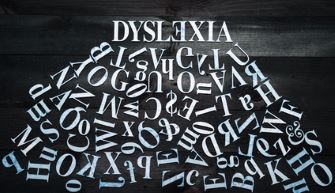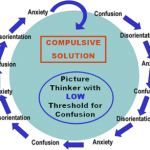Related Learning Differences

Parents are often confused by different labels and diagnoses that have been suggested to be a the root of their child’s learning or behavior difficulties.
More than seventy learning disability categories appear to be either related to dyslexia, or to be different manifestations of dyslexia.
The methods described in The Gift of Dyslexia and The Gift of Learning have been used successfully to provide varying degrees of improvement for all the following conditions:
- ADD/ADHD (Attention Deficit Disorder):
- The inability to maintain attention or focus on what is being presented. There is a genuine medical condition called ADHD, which prevents a person from maintaining attention on anything for long. However, Ron Davis feels that many children being currently diagnosed with ADHD are simply bored with the way subjects are taught in US schools.
- Autism:
- A condition that prevents a person from being in contact with outside reality. Based on his personal experience, Ron Davis describes it as “like super-dyslexia, only with more severe disorientations triggered by auditory stimuli.” The Davis approach to autism is detailed in the book, Autism and the Seeds of Change.
- Central Auditory Processing Disorder:
- This term is being increasingly used to describe individuals who have problems with listening, either in distinguishing sounds in their language or in comprehending the words they hear. Those who use this ‘diagnosis’ admit that they don’t know what causes it or what to do about it. We believe it is a result of disorientation and the inability of dyslexic people to think with abstract words.
- Dyscalculia/Acalculia:
- Difficulty with math or an inability to use numbers and do math.
- Dysgraphia/Agraphia:
- Difficulty writing or an inability to write.
- Dysmapia (a new term coined by Alice Davis):
- Difficulty with reading maps or finding places. It appears to be related to the confusion some dyslexics have with compass directions, spatial orientation, and directional words such as “left,” “right,” “up” and “down.”
- Executive Function Disorder
- Executive function are mental skills that enable people to complete tasks and interact with others. A person with executive function disorder will have poor organizational skills and difficulty controlling their own behavior.
- Hyperactivity:
- Inattention or “daydreaming” with the addition of physical motion by the student. Ron Davis’ theory is that this movement is caused by distortions in the senses of balance, movement and time when a student is disoriented.
- Sensory Processing Disorder:
- Difficulty receiving and responding to information that comes in through the senses. Individuals with SPD may oversensitive or undersensitive to sounds or textures in their environment; they may be clumsy and have a poor sense of balance.
Related Articles
Disorientation, Confusion, and the Symptoms of ADHD
How Disorientation Undermines Conceptual Understanding.
Disorientation and distorted perceptions do more than create symptoms of dyslexia. The dyslexic or ADHD child uses disorientation for entertainment; he may be disoriented for hours on end ...
Dyslexia and the Threshold for Confusion
When dyslexic people make mistakes in reading or spelling, it is because they are experiencing disorientation, which results in distorted perceptions. The person's threshold for confusion is a key factor in how often he or she disorients. A...
The Cause of Dyslexia: Anatomy of a Learning Disability
The individual encounters an unrecognized stimulus. This could be a word (written or spoken), symbol, or object that is not recognized. The lack of recognition causes a feeling of confusion. Confusion naturally and automatically...




